A Different Perspective on Transgender Athletes in Sports
I have resisted the urge to join the discussions surrounding transgender athletes in sports, as the topic is highly polarising and doesn’t seem likely to be resolved any time soon.
As a seasoned athlete and coach, I’ve been closely following the debate surrounding transgender athletes in sports for over a year now [1] with World Athletics’ recent ban on transgender women competing in female categories at international events. It was time to leave my cave and add my voice to the discussion. I wanted to present a slightly different perspective on the endless views.
This explainer post is driven by my deep concerns about playing God with hormones and the ethical implications of doing so. I wholeheartedly believe that adjusting hormones to compete in sports is wrong. I similarly felt the same about the rulings surrounding Differences in Sex Development (DSD) athletes. These treatments are relatively new, and we don’t fully understand their long-term side effects.
In this post, I will delve into the physical aspects of the debate, such as muscle gain, muscle density, and ligament and tendon thickness. And the energy stored in these tissues results from adaptation to training. By examining the advantages gained by transgender women in these areas and comparing them to the differences between men and women from birth, I hope to provide fresh insight into the complex issue of transgender athletes in sports.
As a black person and part of a community that has faced discrimination for centuries, I am sensitive to the challenges faced by marginalised communities. In presenting my analysis, I’ve tried to remove personal feelings and focus on my years of training to make it to the Olympics (okay, that dream did not come to fruition 😭). This is not an attack on a group of people but rather an honest attempt to bring forth a new angle based on my experiences in competitive sports.
The discussion surrounding transgender athletes in sports requires deep and serene debates. It encompasses many moral, ethical, and societal questions that challenge our understanding of fairness and inclusivity in competitive environments.
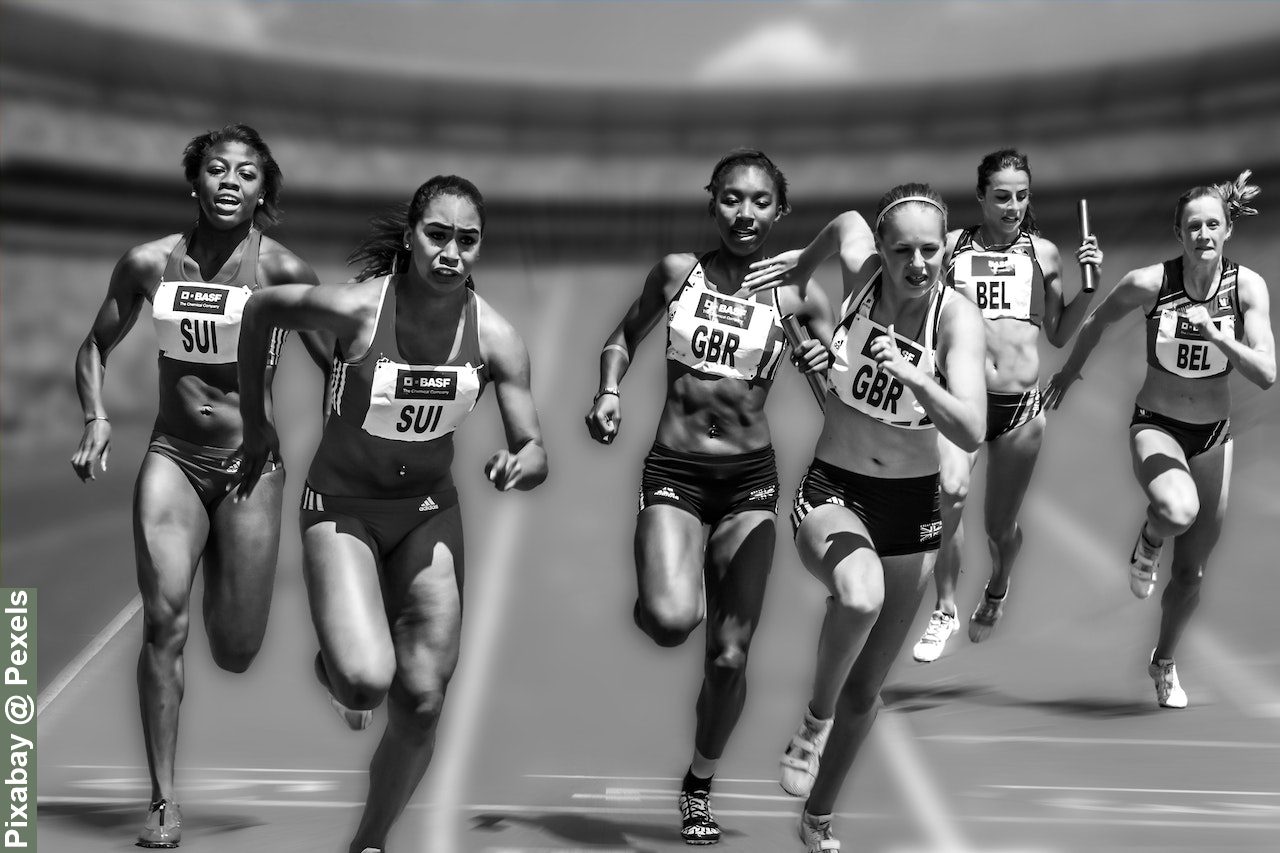
The Current Transgender Athlete in Sports Debate
The current debate about transgender athletes in sports is highly polarised, with opinions divided on whether allowing transgender women to compete in female categories is fair [2]. Supporters argue that inclusivity is essential, while opponents contend that anatomical differences may provide an unfair advantage [3].
To help illustrate the chain of viewpoints, I have produced the list below. This list effectively demonstrates the issue’s complexities, involving various stakeholders with different perspectives and interests.
- Transgender Athletes – Their right to compete, fair treatment, and mental well-being.
- Non-transgender Competitors – Concerned about fairness and maintaining a level playing field.
- Sports Organizations or Sports Federations – Ensuring up-to-date and equitable rules and guidelines for all athletes.
- Sports Events or Sports Competitions – Need to maintain positive public perception and avoid negative publicity.
- Spectators – Desire to witness genuine competition and authentic athletic achievements.
- Friends and Family – Concerned about the well-being and experiences of athletes (transgender and non-transgender).
- Governments and Policymakers – Must address the broader societal implications and develop inclusive policies.
Regrettably, the discourse surrounding transgender athletes has become needlessly divisive. Further complicated by conflicting data and perplexing narratives. It’s essential to promote a more insightful and productive conversation. We should focus on practical, concrete strategies for fostering inclusivity and fairness in sports.
Understanding Transgender Individuals
Defining Transgender
Transgender refers to individuals whose gender identity differs from the sex assigned at birth [4]. It is essential to recognise that being transgender is not a choice but rather a fundamental aspect of a person’s identity [5].
This understanding is crucial for discussing transgender athletes in sports and ensuring a respectful and inclusive dialogue.
The Gender Spectrum
The gender spectrum acknowledges that gender is not binary (male or female) but exists on a continuum [6]. People may identify as genderqueer, non-binary, or genderfluid, among other identities [7].
This recognition expands the conversation on transgender athletes in sports. Emphasising the need for policies and practices sensitive to the diverse experiences of gender identity.
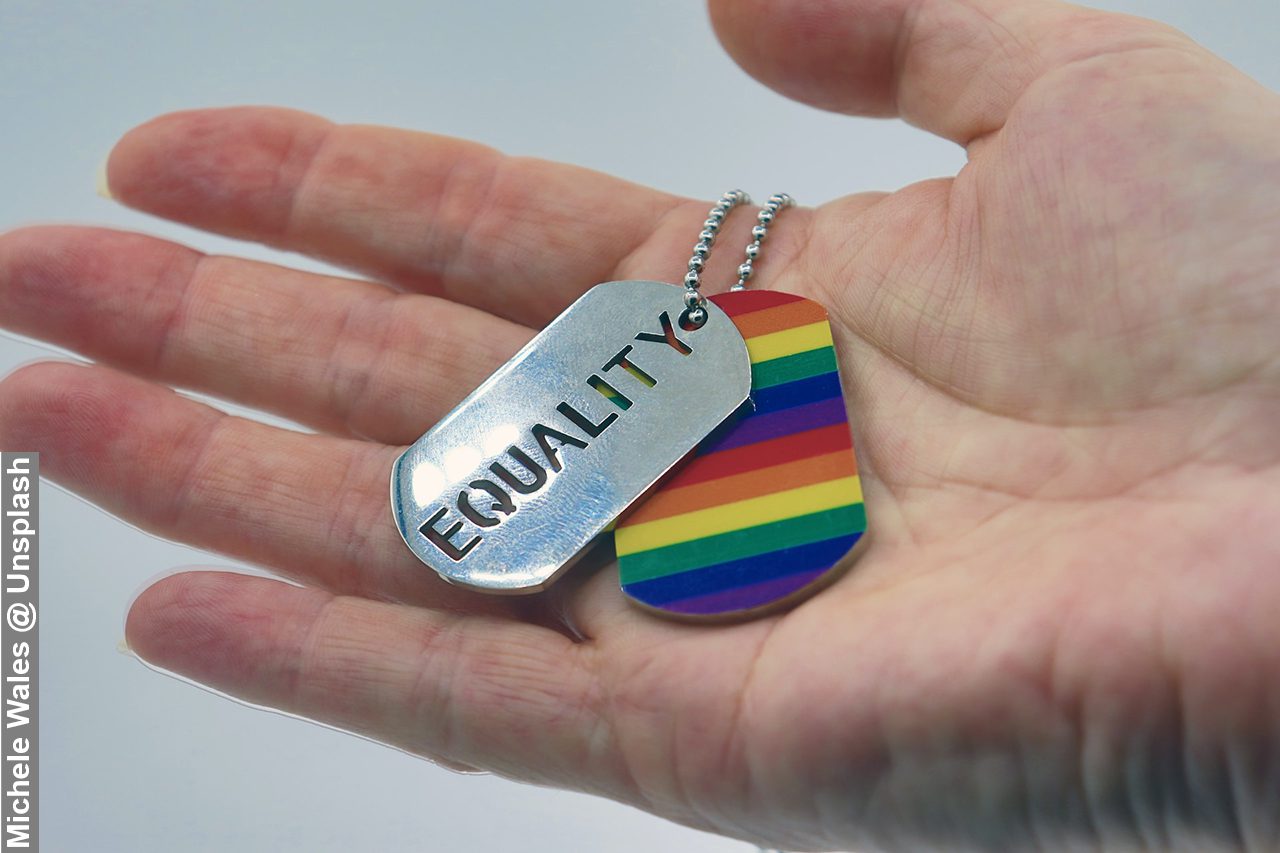
The Current Discussion’s Shortcomings
The Parallel With Drugs In Sports
Some argue that the transgender athletes in sports debate are similar to the issue of drugs in sports [8]. Both discussions focus on fairness and potential advantages [9]. I share this view, not as a direct comparison, but more the benefits gained from training hard for longer. I will visit this later in this post.
However, this comparison may be oversimplified and even misleading. The transgender debate involves complex factors like identity, inclusivity, and the impact of gender transition on athletic performance [10].
In the case of drugs in sports, athletes typically engage in deliberate acts of cheating to gain an unfair advantage. Comparing this to transgender athletes, who are not deliberately seeking an edge, risks perpetuating stereotypes and misconceptions.
To better understand the nuances of the transgender athlete debate. But, first, we must separate it from the drug cheating narrative and consider the unique challenges and experiences faced by transgender athletes.
Furthermore, the use of performance-enhancing drugs directly contravenes the principles of fair play. The participation of transgender athletes is an issue of inclusion and equal opportunity. Recognising that these two situations’ underlying motives, values, and implications are fundamentally different is essential.
By examining transgender athletes in sport debate independently and avoiding oversimplified comparisons, we can cultivate a more comprehensive and empathetic understanding of the issues at play.
The Anatomical Advantage
Critics often highlight the potential anatomical advantage transgender women may possess, particularly in strength and power-based sports [11]. I will put my hands up and admit I am part of this group. I remember the outcry after Justin Gatlin won the gold World Championships as a former athlete. This was against the backdrop of his coming back after a drug violation. The discussion was not that he was still on drugs but more about what he gained from being on drugs. The irreversible advantage gained.
Muscle mass, bone density, and oxygen-carrying capacity could contribute to performance disparities[11]. However, this may overlook the impact of hormone therapy and other transition-related medical interventions on athletic performance [12].
For instance, hormone therapy can significantly change muscle mass, bone density, and oxygen-carrying capacity. If this is the case, we will have levelling of the playing field for transgender athletes. This level of medical intervention is what I term the playing of God.
Additionally, it’s important to note that every athlete possesses unique physical traits. And it’s essential to remember that not all transgender women will have the same advantages. By evaluating all relevant factors, we can develop a more comprehensive and nuanced understanding of fairness in transgender athletes in sports.
Beyond Anatomical Factors
The current debate on transgender athletes in sports focuses on physical factors, but there’s more to consider. The psychological impact of constantly being scrutinised, for example, can significantly affect a transgender athlete’s performance.
It’s crucial to question whether society needs to be quicker to judge and draw conclusions based on assumptions rather than evidence. I am guilty of this, as I firmly believe that the strength held in the ligaments and tendons provides an advantage. I will touch on this later.
However, we must incorporate these broader perspectives. It will allow us to work towards a more inclusive, informed, and balanced understanding of transgender athletes’ participation in sports.

History Of Transgender Athletes In Sports and Competition
Transgender Athletes in Sports Pioneers And Key Events
The history of transgender athletes in sports is rich with groundbreaking moments and trailblazers who challenged norms. Renée Richards, a transgender tennis player, played a crucial role in shaping this history. In the 1977 US Open, she fought for her right to compete, winning a landmark case and paving the way for future transgender athletes [13]. Her courage and determination marked a significant milestone in fighting for inclusion and fairness in sports.
Another notable event was the International Olympic Committee’s (IOC) introduction of guidelines for transgender participation in 2003 [14]. This decision demonstrated a growing awareness and recognition of transgender athletes’ rights within the sporting world. In addition, the IOC’s move sparked ongoing discussions on the balance between fairness and inclusion and the need for evidence-based policies that consider the unique experiences and challenges faced by transgender athletes.
These pioneers and key events serve as reminders of the progress made but also highlight the need for continued dialogue and understanding. As the landscape of sports evolves, it’s important to celebrate the achievements of trailblazing transgender athletes. While also recognising the complexities that persist in achieving true inclusivity and fairness in competitive sports.
Evolving Policies And Regulations
Over the years, policies and regulations surrounding transgender athletes in sports have evolved. For example, the IOC’s 2003 guidelines required transgender athletes to undergo sex reassignment surgery and two years of hormone therapy before competing.
However, in 2015, the IOC revised these guidelines, removing the surgery requirement and reducing the hormone therapy period to one year [15]. These changes reflect a growing understanding of the diverse experiences of transgender athletes and the need for more inclusive policies.
Views On Transgender Women In Sports
Martina Navratilova’s Perspective
Martina Navratilova, a tennis legend (GOAT debate?), has expressed concerns about transgender women competing in women’s sports, arguing that it can be unfair due to physical advantages. In her own words, when discussing transgender athletes, said [16]:
It’s insane and it’s cheating
However, her statements have been criticised for lacking nuance and understanding of the transgender community. Something I find hard to believe, Navratilova is openly a lesbian. She came out publicly in 1981, becoming one of the first prominent athletes to do so. Since then, she has advocated for LGBT rights and actively promotes equality and inclusion. Her views came from the same place as mine, knowing what it takes to compete in a gladiatorial environment.
Sharron Davies’ Viewpoint
Sharron Davies, a former British swimmer, shares similar concerns to Navratilova. She argues that transgender women may have an unfair advantage in sports due to their male biological history. Davies stated [17]:
It is not a transphobic thing – I really want to say we have no issue with people who are transgender
Davies’ opinions have also been criticised, with some arguing that her perspective oversimplifies the complexities surrounding transgender athletes in sports.
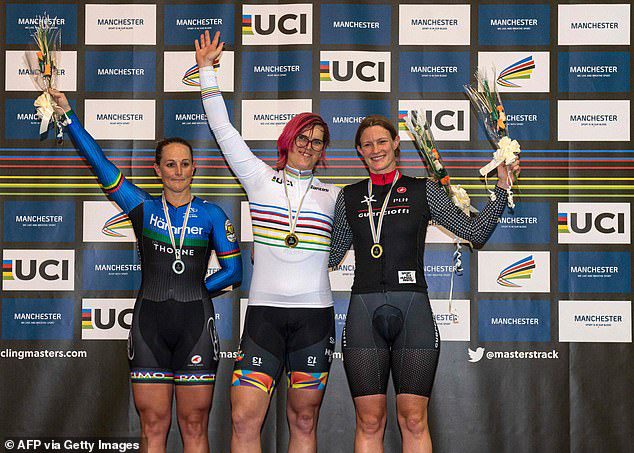
Arguments For Inclusivity
On the other hand, advocates for transgender inclusion in sports argue that policies should be based on scientific evidence and fairness rather than fear or misinformation. For example, Rachel McKinnon, a transgender cyclist, stated that [18]:
Policies should be evidence-based and trans women should be able to compete
Dr Eric Vilain, a geneticist and expert in sex differences in athletes, explains [19]:
There is no scientific consensus on the best way to classify people into male or female categories. And it’s not as simple as looking at someone’s chromosomes
These advocates emphasise the importance of understanding the diverse experiences of transgender athletes and promoting inclusivity in sports.
World Athletics’ Ban On Transgender Women
The Ban Statement And Reasoning
In a recent move, World Athletics (formerly IAAF) banned transgender women from competing in international women’s events [20]. World Athletics expressed concerns about the potential advantages transgender women might have. They sighted increased muscle mass and strength due to testosterone exposure during puberty could offer gains [21].
The BBC report on the ban reveals that World Athletics’ decision aims to ensure a level playing field for cisgender female athletes and preserve the integrity of women’s sports.
The ban has generated a significant amount of debate, with various opinions emerging regarding the fairness and inclusivity of sports. A separate BBC article delves into this debate, highlighting the challenges faced by World Athletics as they seek a way forward that balances both fairness and inclusion [22].
World Athletics’ decision has ignited discussions on the extent to which transgender women should be allowed to participate in top-level sports events. And the potential impact of their participation on cisgender female athletes.
Reactions And Responses
The ban has sparked mixed reactions. Some individuals supported the decision, believing it protects the integrity of women’s sports. However, critics argue that the ban is discriminatory and disregards the diverse experiences of transgender athletes.
A New York Times article discussing the controversy surrounding Caster Semenya’s case highlights the challenges of determining fairness in sports [23]. Dr Veronica Ivy, a transgender athlete and advocate, asserts that the focus should be on human rights, dignity, and making sports inclusive for all. In a paper co-authored with Aryn Conrad, Ivy states [24]:
Including trans women athletes in competitive sport is not only possible but also necessary to uphold the values of fairness and inclusion
The debate around the ban continues to underscore the complexities of balancing fairness and inclusion in sports.
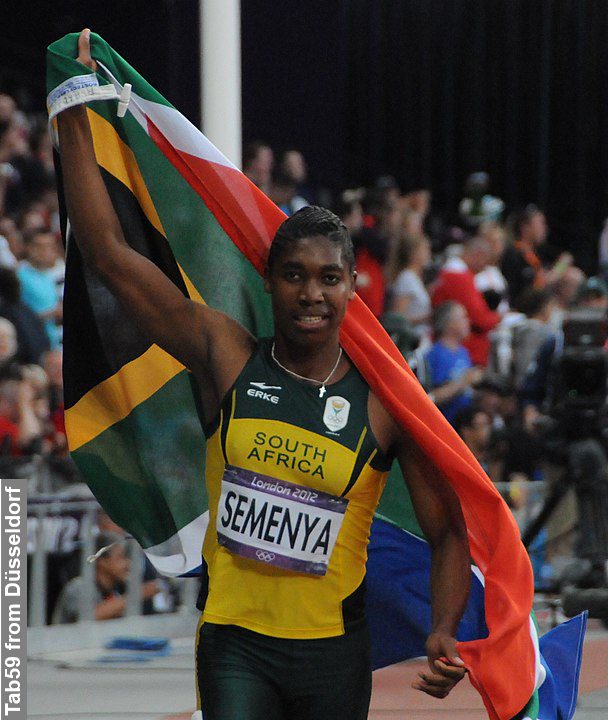
Testosterone Reduction And Its Implications
The Ethical Dilemma Facing Transgender Athletes in Sports
Testosterone reduction is a controversial topic, particularly regarding transgender athletes in sports. I have been dead against this since Caster Semenya’s case came up. My feeling on this could not be more transparent.
The process involves suppressing the testosterone levels of transgender women to meet eligibility criteria for women’s competitions [21]. However, I believe that testosterone reduction raises ethical concerns, as it may have unknown long-term effects and infringes on the rights of transgender individuals. As Dr Katrina Karkazis, a bioethicist, stated [25]:
It is important to question the ethics of requiring a healthy person to alter their hormones
Comparing DSD And Transgender Cases
In addition to transgender athletes, testosterone reduction has also been a point of contention for athletes with DSD [2]. DSD athletes, like Caster Semenya, have been asked to undergo hormone therapy to reduce their testosterone levels to compete in women’s events [26].
The Court of Arbitration for Sport’s decision to uphold such rules has been criticised for potentially violating human rights [27]. Comparing DSD and transgender cases highlights the broader issue of regulating hormone levels in sports, sparking debate over fairness and the rights of affected athletes.
With the strength of emotions from athletes like Lynsey Sharp, the authorities acted. Below is an interview with Lynsey Sharp after the Women’s 800m final 2016 Rio 2016 Olympics running against Caster Semenya.
The Unfairness of Altering Natural Advantages
In sports, various athletes possess unique physical attributes contribute to their success. Usain Bolt’s long legs provide him with a competitive edge in sprinting. Michael Phelps’ large wingspan makes him a dominant force in swimming. These natural gifts, which were given to them at birth, are accepted and celebrated.
However, when it comes to athletes with DSD or transgender athletes, the approach is often different. Regulating their hormone levels to fit within predefined categories can be seen as an attempt to suppress their innate abilities. Just as Bolt’s and Phelps’ attributes are part of their genetic makeup, so to are the hormonal levels of those born with DSD.
Forcing athletes to alter their hormones to compete may be seen as an infringement on their rights and a disregard for the natural gifts they were born with. Additionally, the long-term side effects of hormone manipulation remain unclear, raising further ethical concerns.
Athletes with DSD primarily originate from less affluent nations, where DSD is often considered taboo. Although it may seem like they possess a unique gift or talent, societal disapproval complicates their situation. The very attribute they were born with is being challenged. Those in the West frequently make decisions about their future, often without considering the consequences for these athletes.
The history of sports is filled with examples of bad science and ‘biological racism’ [28], leading to the mistreatment of athletes based on their unique physical characteristics. Striving for fairness and inclusion in sports should involve embracing diversity and the wide range of talents that come with it rather than attempting to manipulate or suppress them.
Benefits of Drugs In Sports
Performance-Enhancing Substances
Performance-enhancing drugs (PEDs) have long been controversial in sports due to their potential to improve athletes’ performance, giving them an unfair advantage [29].
Anabolic steroids, for instance, can increase muscle mass, strength, and endurance [30]. However, PEDs are generally prohibited, and athletes caught using these substances often face significant consequences, such as suspensions or bans [29].
Lasting Anatomical Gains
While I do not condone using PEDs, I acknowledge that they may lead to lasting anatomical gains, even after an athlete has served a ban. My concern lies in the context of transgender athletes in sports.
Just as PEDs can have long-term effects, I believe individuals assigned male at birth may retain certain anatomical advantages even after transitioning to female. This is not meant to be discriminatory but rather to highlight a potential issue in the fairness of competition. According to a study by Hilton and Lundberg, ‘Transgender women experienced a 5% loss of muscle mass after 12 months of hormone therapy, but their strength was well above that of cisgender women’ [11].
This suggests that anatomical advantages may persist even after transitioning, warranting further consideration in the debate surrounding transgender athletes in sports.
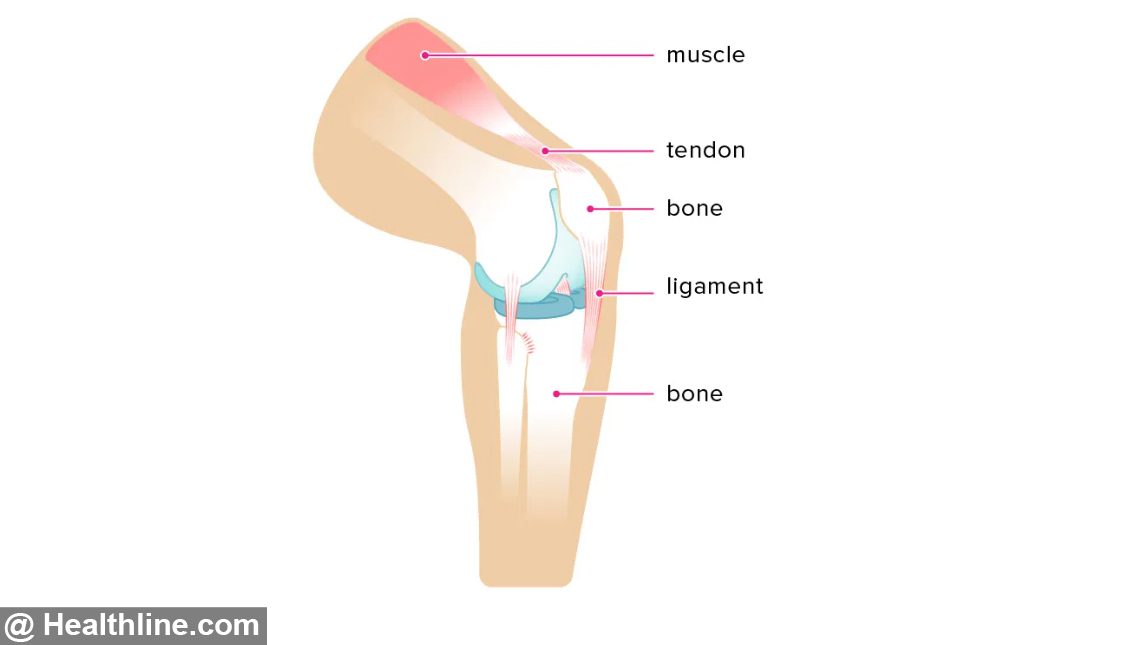
Ligaments And Tendons Advantage
Understanding Ligaments And Tendons
Ligaments and tendons are crucial for athletic performance, as they contribute to stability, force transmission, and movement [31, 32]. Ligaments, the connective tissues binding bones together, ensure joint stability and help prevent injuries during high-impact activities. Tendons attach muscles to bones, allowing for efficient force transmission and enabling athletes to perform powerful and precise movements.
Training can lead to adaptations in both ligaments and tendons, impacting an athlete’s performance. This was one of the contentious issues surrounding Justin Gatlin’s gold-winning return. Through consistent training, these structures may become stronger and more resilient. Thus, enhancing an athlete’s ability to withstand the physical demands of their sport. These adaptations can result in improved force generation, reduced injury risk, and better athletic performance.
When considering transgender athletes in sports, it is vital to analyse the potential impact of such adaptations on performance. For example, the role of ligaments and tendons in force transmission and joint stability raises questions about whether transgender women may retain some advantages from their pre-transition physiology.
However, whilst I feel strongly about this, it is essential to consider the complex interplay of factors, including hormone therapy and other transition-related interventions, in evaluating fairness in sports.
Training Adaptations And Anatomical Differences
As an athlete, you know the importance of marginal gains and the role of training in improving cardiovascular fitness, strength, and technique. In addition, continuous training can lead to stronger ligaments and tendons, allowing for better performance and injury prevention [33].
There may be inherent anatomical differences between individuals assigned male and female at birth, particularly in the strength and structure of ligaments and tendons [34]. This raises concerns about the potential advantage transgender women may have over cisgender women in sports.
While testosterone reduction may address some aspects of this advantage. It may not fully mitigate the inherent differences in ligament and tendon strength gained from being born male [11].
This complex issue must be carefully considered in the ongoing debate surrounding transgender athletes in sports to ensure a balance between fairness and inclusivity.
The Oscar Pistorius Case
Stored Energy In Prosthetic Blades
To further highlights the potential gains. Let’s consider Oscar Pistorius. He was a double amputee athlete who made history when he competed in the 2012 London Olympics using prosthetic blades. His unique situation sparked discussions about the potential advantage his prosthetics might provide.
His carbon-fibre blades were designed to store and release energy, allowing him to spring off the ground more efficiently [35]. In addition, some experts claimed that the stored energy in the blades reduced the energy cost of running and, consequently, could be advantageous [36].
Admittedly, Oscar Pistorius was eliminated after the first round, yet his participation was monumental. However, the core issue wasn’t about Pistorius himself but whether the blades provided an advantage. Although he didn’t win gold, given human evolution, it’s only a matter of time before someone on blades does. We may have buried our heads in the sand after this incident, but the lingering question remains.

The Debate On Unfair Advantage
The debate surrounding Pistorius’ participation in the Olympics centred on whether his prosthetics provided an unfair advantage over able-bodied athletes. While some argued that his prosthetics conferred a benefit. Others claimed that Pistorius had to overcome various challenges and disadvantages related to his disability [37].
Ultimately, Pistorius was allowed to compete in the 2012 Olympics, highlighting the complexities of addressing fairness in sports. In addition, the Pistorius case offers an interesting parallel to the discussions around transgender athletes in sports.
Specifically regarding the potential advantage of the inherent anatomical differences such as the Ligaments and Tendons offer. As with the Pistorius case, balancing fairness with all athletes’ opportunities to compete and showcase their talents is crucial.
Balancing Fairness And Inclusivity
Science may not be perfect. Therefore, we must allow various scientific disciplines to guide our understanding and actions concerning transgender issues. In this case, we must consider biology, endocrinology, psychology, sociology, and ethics. As deciding on inclusive policies for transgender individuals is inherently a social and moral act.
Just as epidemiology informs us about the risks of COVID-19 but not how to halt its spread, our knowledge of transgender-related matters tells us of the need for change but not necessarily the methods to implement it.
Empathy For Transgender Athletes In Sports
It is crucial to approach the issue of transgender athletes in sports with empathy and understanding. Transgender individuals often face discrimination and marginalisation in various aspects of life. However, sports can be a powerful avenue for promoting inclusivity and acceptance [38].
As Dr Rachel McKinnon, a transgender cyclist, stated [24]:
We need to be more inclusive, not less
It is essential to acknowledge the challenges faced by transgender individuals and strive to create an environment where everyone feels welcome and supported.
Addressing Anatomical Advantage Concerns
While promoting inclusivity is vital, addressing concerns about potential anatomical advantages is also essential. As discussed earlier, factors such as Ligaments and Tendon advantage may contribute to the debate on fairness in sports.
Ensuring policies and regulations are grounded in scientific evidence and expert opinions can help balance fairness and inclusivity. As Dr Eric Vilain, a geneticist and expert in sex differences in athletes, explains [24]:
It’s important to create a level playing field based on science, not fear or misinformation
Ultimately, the issue of transgender athletes in sports presents a complex challenge that requires a delicate balance between fairness and inclusivity. By fostering empathy and understanding and grounding decisions in scientific evidence, sports organisations can work towards creating a more inclusive environment that celebrates diversity and promotes equal opportunities for all athletes.
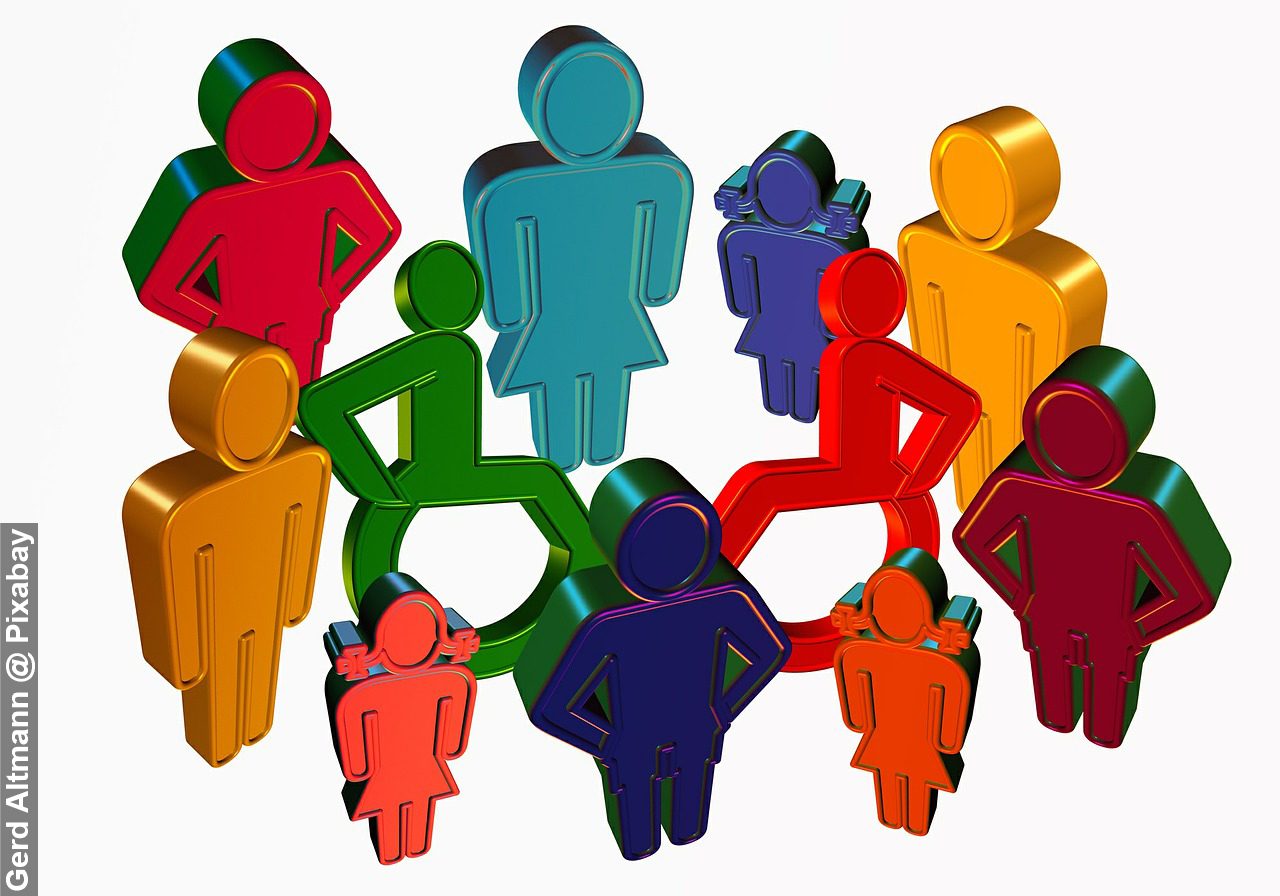
Conclusion on Transgender Athletes in Sports
The Importance Of A Balanced Approach
Addressing the issue of transgender athletes in sports requires a balanced approach. It is essential to consider the feelings and experiences of transgender individuals. While also acknowledging the concerns about potential anatomical advantages, such as Ligaments and Tendon benefits [39].
However, based on the current understanding of the anatomical advantages, the existing policies may only partially account for these advantages, potentially leading to unfair competition.
The Way Forward For Transgender Athletes In Sports
The way forward for transgender athletes in sports should involve thoroughly examining the anatomical advantages. How they affect fairness in competition. As more research is conducted, sports organisations must revise their policies to reflect the latest findings and balance justice and inclusivity.
The issue of transgender athletes in sports is complex, and the potential anatomical advantages gained by transgender women cannot be overlooked. This article emphasises the need for greater scrutiny of the anatomical differences between cisgender and transgender athletes, especially regarding Ligaments and Tendon advantage.
While it is crucial to create an inclusive environment that respects transgender individuals’ rights, the pursuit of fairness in sports competitions should remain a priority. The solution is finding a balance that upholds justice without compromising inclusivity, which may involve refining policies and regulations based on the latest scientific evidence.
References:
[1] Gleaves J, Lehrbach T. Beyond fairness: the ethics of inclusion for transgender and intersex athletes. Journal of the Philosophy of Sport. 2016;43(2):311-26.
[2] Harper J. Race Times for Transgender Athletes. Journal of Sporting Cultures and Identities. 2015;6:1-9.
[3] Karkazis K, Jordan-Young R. The Powers of Testosterone: Obscuring Race and Regional Bias in the Regulation of Women Athletes. Feminist Formations. 2018;30.
[4] Association AP. Guidelines for psychological practice with transgender and gender nonconforming people. American Psychologist. 2015;70:832-64.
[5] WPATH. Standards of Care for the Health of Transsexual, Transgender, and Gender Nonconforming People. World Professional Association for Transgender Health; 2011.
[6] Lorber J. Paradoxes of Gender: Yale University Press; 1994.
[7] Kessler SJ, McKenna W. Gender: An Ethnomethodological Approach: University of Chicago Press; 1978.
[8] Dimeo P. A History of Drug Use in Sport: 1876 – 1976: Beyond Good and Evil: Routledge; 2007.
[9] Teetzel S. On Transgendered Athletes, Fairness and Doping: An International Challenge. Sport in Society. 2006;9(2):227-51.
[10] Genel M. Transgender Athletes: How Can They Be Accommodated? Current Sports Medicine Reports. 2017;16:12-3.
[11] Hilton EN, Lundberg TR. Transgender Women in the Female Category of Sport: Perspectives on Testosterone Suppression and Performance Advantage. Sports Medicine. 2021;51(2):199-214.
[12] Tanisawa K, Wang G, Seto J, Verdouka I, Twycross-Lewis R, Karanikolou A, et al. Sport and exercise genomics: the FIMS 2019 consensus statement update. British Journal of Sports Medicine. 2020;54(16):969.
[13] Pieper LP. Sex Testing: Gender Policing in Women’s Sports: University of Illinois Press; 2016.
[14] IOC. IOC Consensus Meeting on Sex Reassignment and Hyperandrogenism. International Olympic Committee; 2003.
[15] IOC. IOC Consensus Meeting on Sex Reassignment and Hyperandrogenism. International Olympic Committee; 2015.
[16] Navratilova M. The Rules on Trans Athletes Reward Cheats And Punish The Innocent: The Times; 2019.
[17] Kelly G. Sharron Davies on the transgender sports row: ‘How can this be fair to women?: The Telegraph.
[18] Savage R. British Female Olympians Argue Against ‘Unfair’ Trans Women Athletes: Reuters; 2019.
[19] Reardon S. The Spectrum of Sex Development: Eric Vilain and the Intersex Controversy: Scientific American; 2016.
[20] Athletics W. World Athletics Consolidated Rule Book: World Athletics; 2021.
[21] Pielke R, Tucker R, Boye E. Scientific integrity and the IAAF testosterone regulations. The International Sports Law Journal. 2019;19(1):18-26.
[22] BBC. World Athletics Transgender Women Decision Prompts Fairness & Inclusion Debate: BBC; 24 March 2023.
[23] Longman J. Understanding the Controversy Over Caster Semenya: The New York Times; 2016
[24] Ivy V, Conrad A. Including Trans Women Athletes in Competitive Sport: Analysing the Science, Law, and Principles and Policies of Fairness in Competition. Philosophical Topics. 2018;46:103-40.
[25] Karkazis K, Jordan-Young R. Science and society. Debating a testosterone “sex gap”. Science (New York, NY). 2015;348:858-60.
[26] Ingle S. Semenya Loses Landmark Legal Case Against IAAF Over Testosterone Levels: The Guardian; 2019.
[27] CAS. CAS 2018/O/5794 Mokgadi Caster Semenya v. IAAF & CAS 2018/O/5798 Athletics South Africa v. IAAF. Court of Arbitration for Sport; 2019.
[28] Slater M. Sport & Gender: A History of Bad Science & ‘Biological Racism’: BBC; 28 July 2015
[29] WADA. The World Anti-Doping Code 2021. World Anti-Doping Agency; 2021.
[30] Hartgens F, Kuipers H. Effects of Androgenic-Anabolic Steroids in Athletes. Sports Medicine. 2004;34(8):513-54.
[31] Benjamin M. The fascia of the limbs and back – a review. Journal of Anatomy. 2009;214(1):1-18.
[32] Sharma P, Maffulli N. Tendon injury and tendinopathy: healing and repair. J Bone Joint Surg Am. 2005;87(1):187-202.
[33] Magnusson SP, Kjaer M. The impact of loading, unloading, ageing and injury on the human tendon. The Journal of Physiology. 2019;597(5):1283-98.
[34] Sarver DC, Kharaz YA, Sugg KB, Gumucio JP, Comerford E, Mendias CL. Sex differences in tendon structure and function. J Orthop Res. 2017;35(10):2117-26.
[35] Weyand PG, Bundle MW, McGowan CP, Grabowski A, Brown MB, Kram R, et al. The fastest runner on artificial legs: different limbs, similar function? Journal of Applied Physiology. 2009;107(3):903-11.
[36] Brüggemann G-P, Arampatzis A, Emrich F, Potthast W. Biomechanics of double transtibial amputee sprinting using dedicated sprinting prostheses. Sports Technology. 2008;1(4-5):220-7.
[37] Hilvoorde I, Landeweerd L. Disability or Extraordinary Talent—Francesco Lentini (Three Legs) Versus Oscar Pistorius (No Legs). Sports Ethics and Philosophy. 2008;2:97-111.
[38] Caudwell J. [Transgender] young men: gendered subjectivities and the physically active body. Sport, Education and Society. 2014;19(4):398-414.
[39] Handelsman DJ, Hirschberg AL, Bermon S. Circulating Testosterone as the Hormonal Basis of Sex Differences in Athletic Performance. Endocr Rev. 2018;39(5):803-29.

